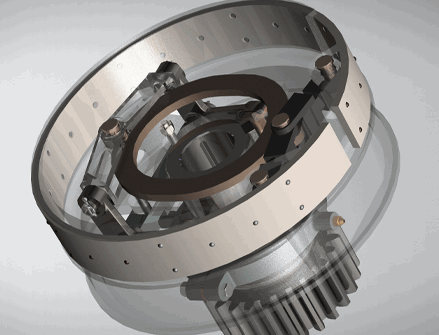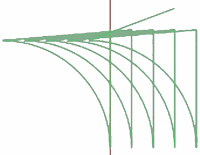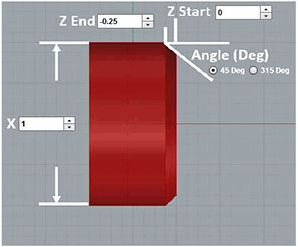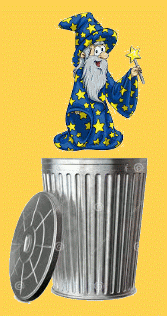We get asked a LOT about the differences between CAD/CAM systems … such as Fusion360, Bobcad, Mastercam etc. … and Kipware® conversational software and our approach to “shop floor CNC programming”. We always love to take the opportunity to offer the explanation about our design and concept that differentiates Kipware® from CAD/CAM programming. We feel it is a major difference … and one that when understood can bring increased efficiency and flow to any shop floor from the production shop to even a home shop.
Let’s first start by stating that when we refer to “shop floor programming” we are not only talking about creating G code programs at the machine … on the shop floor … but are talking more about creating G code programs outside the realm of a “programmer” inside a “programming department”. Having qualified chipmakers have access to a tool to assist them in creating G code programs that do not require the training and knowledge required to create CAD drawings or function inside a complex CAD/CAM environment. Basically … G code creation for the masses !! This type of G code creation can include not only production type machine shops but prototype shops as well as even home shops … anywhere you feel the phrase “this job DOES NOT require a CAD/CAM system” rings true.
The ORIGINS of CAD/CAM
It is essential in ANY discussion about CAD/CAM to fully understand the history of where it came from. Way back around the late 50’s or so … the first CAD system was created and served as mere replacements for drawing boards. It is definitely an undisputed fact that the origins of CAD/ CAM lie in it’s drawing and design features. From these simple origins of computer aided drafting to the modern 3D engineering, simulation and inter-connectivity features … CAD is probably one of the most important tools in the areas of design and engineering. This is where it was born and is still where it’s main features lie. Look at any of the major CAD/CAM websites and you’ll see it’s all about design and the design features.
The CAM part of it came along later tagging on the design apron strings as a follow-up to CAD … but has always been an after-feature … never the main player. The simple fact that you CANNOT create any cutting toolpaths in ANY CAD/CAM application …. even to simply drill a hole … without a CAD model illustrates this fully. No Drawing … No Toolpath … PERIOD.
CAD and CAD/CAM were primarily developed as design tools … use as a CNC programming tool has always been secondary. If you look deep at an application like Fusion360 … it is primarily about design and collaboration regarding design work … which is great for someone designing and building a product. For shop floors and job shops that have the task of delivering machined components … it really makes less sense.
And herein lies the main difference between CAD/CAM and the Kipware® “shop floor programming” system.
Kipware® Shop Floor Programming
VS.
CAD/CAM
The truth of the matter is … despite what CAD/CAM companies might have you believe … is that turning the above “pretty picture” 3D model … which CAD is essential in developing … into actual physical components is not as simple as clicking the mouse and watching the parts roll out of your CNC machine. It comes down to the more intense basics of fixturing and workholding, cutting tools, toolpath / G code generation, and actual CNC machining … for EACH of the components that comprise the model. There is no CAD/CAM MAGIC involved … it’s simple down and dirty, programming, chipmaking and machining. The picture may look fabulous … but making the actual physical components still requires a skilled CNC programmer / machinist.
AND this is the essence of why what we refer to as “shop floor programming” makes soooo much sense.
Let’s face the facts that not every skilled machinist is a skilled draftsman or CAD operator … but are still one of the most valuable assets on the shop floor. Should their lack of drafting or CAD skills eliminate them from the CNC programming process? Should their lack of drafting or CAD skills eliminate them from applying their skills to program / G code generation. We think that following that path is leading your shop floor down the road of extreme inefficiency.
Kipware® conversational allows skilled chipmakers but unskilled CNC programmers or CAD/CAM personnel to get involved in the programming process. Bringing additional layers of options and efficiency to the shop floor. Kipware® conversational gives them a simple tool to assist them in creating G code programs for the day-to-day type workpieces … leaving the more complex “stuff” to the “CAD/CAM guy”. Have a quick peek at our animated video below that illustrates a scenario we see time and again on shop floors around the world.
Chipmakers better understand the shop floor, their machine and fixturing and tooling. It is natural progression to allow them to process the part based on fixture / tooling availability as well as fixturing / tooling understanding. They know how to hold the part … the tools to use to cut metal … and so who better to create the toolpaths? Kipware® allows for employing multiple chipmakers to creating multiple programs … financially because a purchase includes (2) full seats out of the gate … but also because learning the software is quick and easy due to it’s intuitive design … unlike the complexity entailed with a CAD/CAM system. Any good chipmaker already has the basis for a good CNC programmer. While anyone can be taught to make the tool move around on a CNC machine … chipmakers and machinists understand the most important facets of actual metal removal. It’s not the other way around … someone with no chipmaking experience usually makes a lousy CNC programmer.
The REALITY of Part Programming
Taking a deeper look at the “pretty picture” from our 3D model reveals that it contains a ton of the simpler, every-day type workpieces that can easily be programmed with Kipware® conversational by tons of good chipmakers currently not involved in the programming process because of their “CAD/CAM ignorance” … usually their inability to create a drawing.

The reality of shop programming is that for 95% to 98% of workpieces produced every day in shops around the world … CAD/CAM is overkill … removes good chipmakers from the programming process … and can actually slow down production and contribute to inefficiency. True efficiency on virtually every shop floor dictates that NOT EVERY JOB should be put through the CAD/CAM system … through the “CAD/CAM guy” … nor requires a drawing to create G code. Efficient programming requires that you have an arsenal of tools available so that your CNC programming is not akin to forcing square pegs into round holes. CAD/CAM is one bullet … Kipware® conversational should be another.
The REVOLUTION is ON !!
If the points we have outlined here make sense to you … why not join the revolution? … the Kipware® conversational CNC shop floor programming revolution. Give us a call today or click HERE and arrange for a live, online demonstration of Kipware® conversational. Let us show you Kipware® in action and show you how shop floor programming can FREE you from the CAD/CAM shackles and bring new, improved productivity to your shop for the New Year !! JOIN THE REVOLUTION … say NO to CAD/CAM OVERKILL !!
Kentech Inc.
Toll Free ( within the US ) : 1.888.754.1198
Voice : 1.508.754.1198
Email : Sales@KentechInc.com
URL : www.KentechInc.com
Kenney Skonieczny – President
Kentech Inc.















